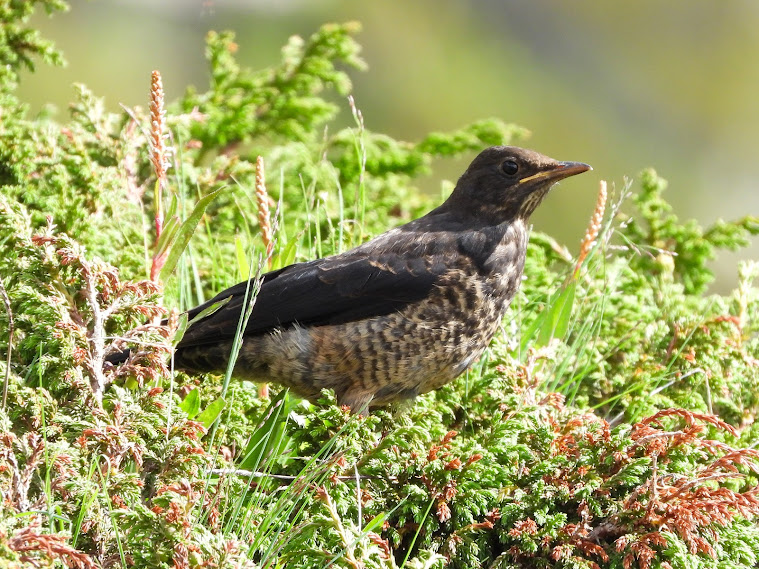Tibetan blackbirds’ first breeding record was documented in Kashmir this summer by bird enthusiasts. The photographic evidence of the bird family together is a first and the only find across India. The bird was captured in the Dachigam area in July this year.
Ansar Ahmad, an avid bird snapper who treks to distant and high-altitude places to capture bird photos, saw the bird family in July this summer. He said: “I saw the bird this year in July and captured the male, female and juvenile. Before it wasn’t confirmed that it’s breeding here, the male, female and juvenile sighting together has confirmed that the Tibetan blackbirds breed in Kashmir. I saw the bird second time as well in the same area of upper Dachigam, Dagwan.”
Upper Dachigam is rich in juniper bushes and hosts other birds’ breeding as well like Himalayan rubythroat, Rufus breasted accentor, Himalayan bluetail, etc. “We found the bird at two locations near the juniper bushes; we found one nesting at Burzuwas area of Dagwan, another was nesting at the Latan area of Dagwan valley,” said Ahmed who has captured more than 270 bird species. Tibetan blackbirds’ nests were seen by Ansar in low bushes.
Later in the same month, a bird photographer who has traveled to many countries to document different birds, Janey Maria, visited Kashmir to confirm its sighting of breeding. “It’s 100% confirmed now that the Tibetan blackbirds breed in Kashmir,” Maria said.
Birders have had a difficult time documenting the bird because of it being “unfriendly” towards noises and disturbance. “The bird is shy and hides,” said a birder.
The bird is poorly documented over most of the Himalayas. According to another birder, the bird is not photograph-friendly.
Earlier in 2015, Suresh Raina, a birder, had documented the bird – but only with male and juvenile in Kishtwar. The breeding in the region was already known but the complete documented record of the bird family was affirmed this summer. The bird is frequently seen by the birders in the northeastern parts of India but there had been no photographic evidence of its breeding in the country.
Intisar Sohail, a wildlife warden in south Kashmir, said, “This is a great find and a first photographic evidence of the bird’s breeding in Kashmir.” Sohail added that the bird has been reported to be breeding in higher reaches of Kashmir, mostly in greater Himalayan ranges, but its sightings were not possible because the birders would not go to the upper regions.
The breeding season of Tibetan blackbirds lasts from May to July. The breeding occurs in juniper bushes (a species of small trees or shrubs). At most, 10 individuals are seen flocking together for food. The bird eats a variety of insects and seeds near the soft ground at the edge of melting snow. The bird likes to hop on steep rocks.
The bird inhabits steep rocky and alpine meadows above the tree line (3,200–4,800 m). To the disappointment of birders who have tried to reach upper regions in search of the bird believe that shepherds who are everywhere in upper reaches rearing their sheep transgress into the birds’ dwelling grounds, for their shepherd dogs add to their disturbance with their barking, resulting in meager sightings of the bird. .
Retired Professor of Zoology, G.M. Bhat who lives near Dachigam said the bird likes microclimatic conditions and lives mostly in hilly areas: “The upper regions which remain undisturbed get the attention of the bird and they flock to that place.”
First evidence of Tibetan blackbird recorded in Kashmir
- Advertisement -

